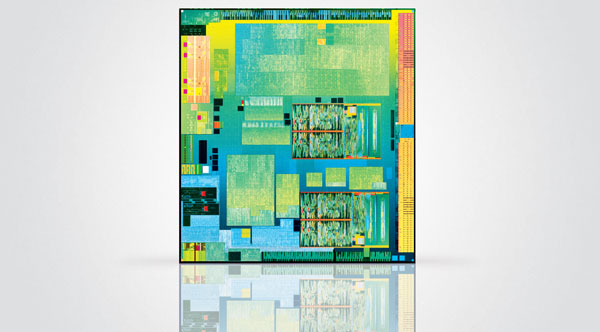Betting On Bay Trail: Intel's Atom Overhaul Tested
Introduction and Positioning
Today, for the first time since Atom first debuted, Intel is launching an updated version of the core that does more than integrate additional function blocks and lower power consumption. The tablet iteration of the new SoC is called Bay Trail, and it's aimed at the red-hot tablet and handheld market currently occupied by various chips from Apple, Qualcomm, Samsung, and NVIDIA.
Our first thought? Finally. This is what Intel's Atom architecture always aspired to.
Intel has done some impressive things with Atom, including its first serious forays into mobile phones and tablets, but the Bonnell microarchitecture that debuted in 2008 was explicitly designed to emphasize low power consumption, not performance. ARM has released multiple processor updates since 2008 -- the Cortex-A8 debuted that year, followed by the Cortex-A9 and the Cortex-A15, while Intel's in-order Atom contented itself with die shrinks and feature integration. Such efforts gave us Medfield and Clover Trail devices, but they also risked Intel being permanently painted as an also-ran.

After today, that shouldn't be a problem.
We've covered the Silvermont architecture before; here we'll focus on the entire tablet, including performance tests and comparisons with other top-flight solutions from major players in the space.
The Bay Trail launch puts Intel in a position to hit both Android and Windows targets. That's in contrast to last year, when Clover Trail launched as a Windows part first, with Android options appearing later in the development cycle. It's also a testament to Windows 8's general weakness in the tablet market -- Android's share of the 7-10" space has grown significantly, while Windows remains mostly flat. Intel hasn't backed off supporting Microsoft, but it's clearly not putting all its eggs in one basket, either.

The various Bay Trail SKUs give some idea of the spaces Intel wants these parts to hit. At the top of the stack, there's the Z3770, a quad-core part with a Turbo Mode up to 2.4GHz, 2MB of L2 cache, dual-channel memory, up to 4GB of RAM (Clover Trail topped out at 2GB) and a maximum display resolution of 2560x1600. There are multiple alternates stepping downwards -- the single-channel parts use faster DDR3-1333 to compensate -- before we hit the dual-core chips. The Z3680 and Z3680D are dual-core chips with burst modes up to 2GHz, and lower memory bandwidth. Memory complements are fixed at 1GB for the Z3680, 2GB for the Z3680D. The Z3680, with its limited 1280x800 resolution, is obviously aimed at low-end devices, with the rest of the hardware aimed at a wide band of potential products and use cases.
*Note: Portions of this article were contributed by Marco Chiappetta and Dave Altavilla
Our first thought? Finally. This is what Intel's Atom architecture always aspired to.
Intel has done some impressive things with Atom, including its first serious forays into mobile phones and tablets, but the Bonnell microarchitecture that debuted in 2008 was explicitly designed to emphasize low power consumption, not performance. ARM has released multiple processor updates since 2008 -- the Cortex-A8 debuted that year, followed by the Cortex-A9 and the Cortex-A15, while Intel's in-order Atom contented itself with die shrinks and feature integration. Such efforts gave us Medfield and Clover Trail devices, but they also risked Intel being permanently painted as an also-ran.

After today, that shouldn't be a problem.
We've covered the Silvermont architecture before; here we'll focus on the entire tablet, including performance tests and comparisons with other top-flight solutions from major players in the space.
Positioning:
The Bay Trail launch puts Intel in a position to hit both Android and Windows targets. That's in contrast to last year, when Clover Trail launched as a Windows part first, with Android options appearing later in the development cycle. It's also a testament to Windows 8's general weakness in the tablet market -- Android's share of the 7-10" space has grown significantly, while Windows remains mostly flat. Intel hasn't backed off supporting Microsoft, but it's clearly not putting all its eggs in one basket, either.

The various Bay Trail SKUs give some idea of the spaces Intel wants these parts to hit. At the top of the stack, there's the Z3770, a quad-core part with a Turbo Mode up to 2.4GHz, 2MB of L2 cache, dual-channel memory, up to 4GB of RAM (Clover Trail topped out at 2GB) and a maximum display resolution of 2560x1600. There are multiple alternates stepping downwards -- the single-channel parts use faster DDR3-1333 to compensate -- before we hit the dual-core chips. The Z3680 and Z3680D are dual-core chips with burst modes up to 2GHz, and lower memory bandwidth. Memory complements are fixed at 1GB for the Z3680, 2GB for the Z3680D. The Z3680, with its limited 1280x800 resolution, is obviously aimed at low-end devices, with the rest of the hardware aimed at a wide band of potential products and use cases.
*Note: Portions of this article were contributed by Marco Chiappetta and Dave Altavilla







